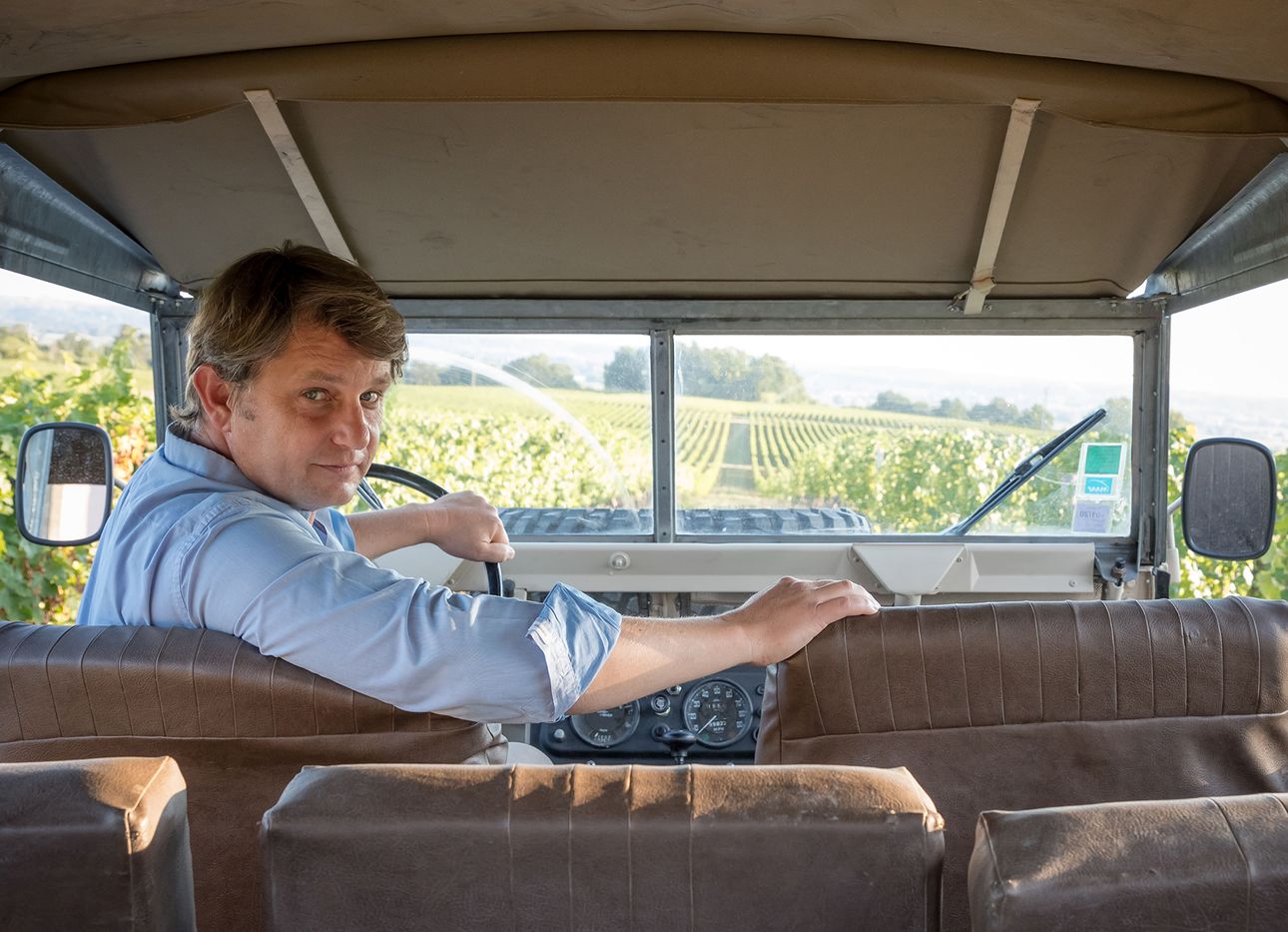
What Makes a Great Vintage, According to Wine-Industry Veteran Aymeric de Gironde
Aymeric de Gironde, CEO of the Château Troplong Mondot estate, located in the Saint-Émilion wine region of Bordeaux, France, grew up working in vineyards—and has never looked back. Here, the industry veteran discusses something few wine lovers truly understand: what makes a great vintage, and why much of the fuss around the fermented grape drink should be tossed out as quickly as a corked bottle.
“There are two things that make a great wine vintage: soil and climate. The aristocracy of wine is the soil. We call it the terroir, which is special soil with a special climate. Great land will allow you to make an incredible wine, even if you’re a bad winemaker. And, at the end of the day, what’s going to make greatness is [bringing out] the best of our vines in a given climate.
Weather depends on the grape variety [and its location]. In Saint-Émilion, the warmer years generally make slightly better vintages—or more sought-after, media-driven vintages. That’s because a warm climate tends to make wine extremely sexy, producing lush, inviting fruit. So warmer vintages usually get greater accolades from wine professionals.
Personally, I’m more in love with a slightly cooler vintage, which tends to make wines less expressive, but, in the long run, makes better wine. Perhaps this is not politically correct, but if you have two very beautiful vintages [one warmer and one cooler], the one coming from the hotter year is like a gorgeous lady or man. In summer’s warmth, you see them in a bathing suit. Cooler vintages are the same gorgeous man or lady, but you see him or her in the winter. In order to discover a great vintage, you have to take off the hat, scarf, jacket, and trousers. That’s the difference.
There’s a lot of snobbery in wine, which is often driven by winemakers themselves, who invent language that nobody else can understand. Generally speaking, there’s too much fuss around many things, such as, You’re drinking Burgundy, so you should have a large-shaped glass. Frankly, I think it’s a question of taste and what you feel. Who is really able to tell the difference between a seventeen-ounce and a fifteen-ounce glass? Don’t go for a huge bowl, because it’s going to release all the flavors and aromas at once, and you’ll miss something. And don’t go to other extremes, like champagne glasses [that don’t allow the wine] enough room to breathe. The key thing is that glasses should be very thin [in the place] where you put your lips, creating a very sensual contact with them.”